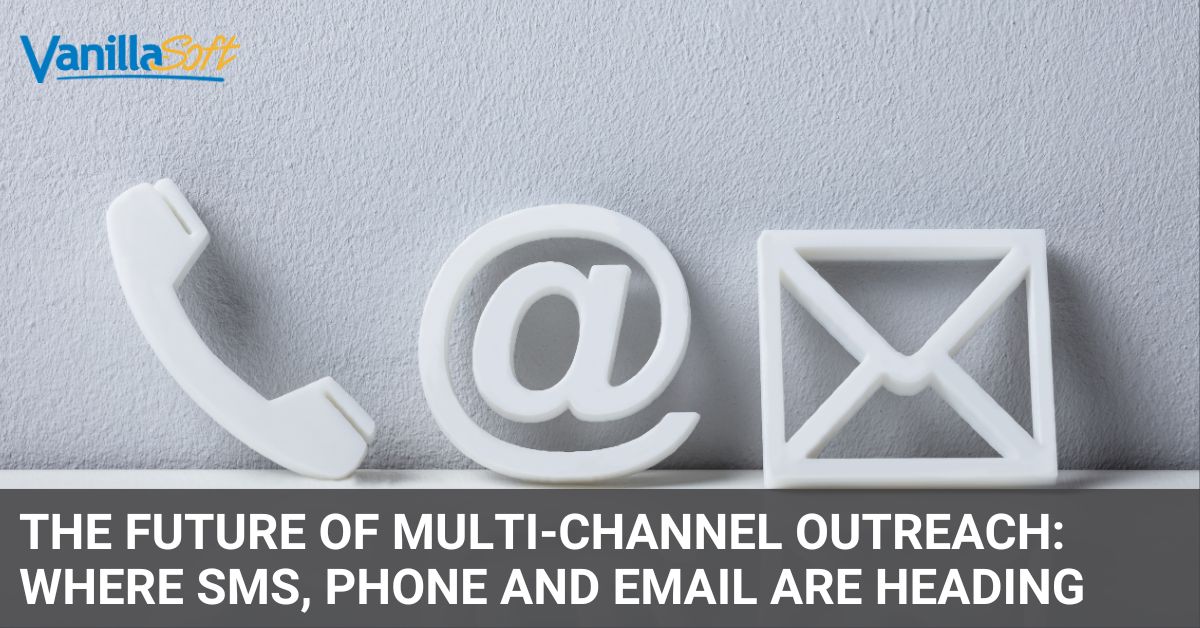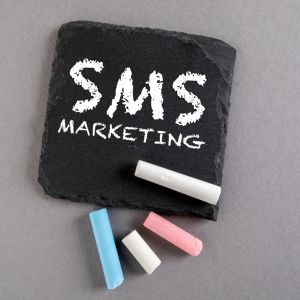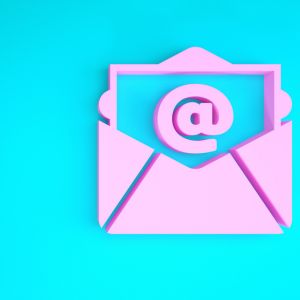
Where SMS, Phone, and Email Are Heading
For more than two decades, businesses have relied on the phone, SMS, and email as the most effective channels to contact their customers. Despite the new technologies that have emerged, these three remain the staples of most marketing and outreach campaigns.
However, this landscape was mostly unregulated, with lots of spam messages and unsolicited calls that became a huge source of annoyance for customers. This has continued to remain a problem for businesses, partly due to mass emailing and robocalling damaging reputations and credibility with customers.
Not only is this an issue from a relational standpoint, but it also creates issues from a technical side aspect. Businesses have experienced their numbers getting blocked, email addresses going to spam, and entire domains getting blacklisted, severely hampering their ability to reach customers.
New rules and regulations are being introduced to put an end to these practices and bring order to the chaos of mass dialing, texting, and emailing. Companies now have to adhere to a set of rules and guidelines to avoid hefty fines.
Is this a step in the right direction?
It depends on the medium, as the same entity does not regulate all three channels.
The Future of SMS
The future of SMS as a marketing channel doesn’t look particularly bright at this point.

Business-to-consumer messaging has been undergoing some turbulent changes, with
new rules (inconsistently) imposed by telecommunication service providers hitting hard against businesses.
Outreach at scale for companies was often done using regular numbers, leading to increased spam. Two major US carriers opted to create a legal framework that would register long-code numbers to combat this issue. This approach is similar to the process for short codes pre-approved by carriers and can handle high throughput without being flagged as spam.
The trouble is that, unlike those for short codes, the new regulations for A2P messaging are inconsistent and tend to change often. Numbers get blocked for no reason, and it’s unclear how to get unblocked. This caused delivery rates to take a nose-dive.
Let’s see what factors contribute to such a complex situation.
What Is A2P 10DLC?
A2P 10DLC, or application-to-peer 10-digit long code number, is a standard phone number businesses use to text their customers.
Implemented by two major carriers, T-Mobile and AT&T, this system has nothing to do with the government. The main idea behind A2P 10DLC was to:
- Protect end users from spam
- Allow businesses to send high volumes of legit messages faster and at a more reasonable price without getting blocked
- Text-enable landline business numbers and provide the local identity to the sender
- Keep texting a credible communication channel.
Short codes are strictly regulated and expensive due to being scarce, so A2P 10DLC seemed like a great idea to bridge the gap between using standard numbers and ensuring a high throughput while minimizing the odds of spam.
On paper, this service is a game-changer, but in reality, things took a turn for the worse and became too complicated for businesses, mainly due to the lack of a definitive structure and the rollout issues.
What actually happens:
- The carriers change rules regarding the volume and the kind of message businesses can send all the time
- Numbers get blocked for no reason
- Delivery rates took a nose dive.
Even though there is a central registration system, the rules are carrier-specific. In other words, carriers have different throughput rates and aren’t aligned. Companies have to pay a fee to register and a monthly maintenance fee, in addition to sharply increasing costs as a company expands.
For example, to register more than 49 lines, you must pay one carrier $2,000 for the privilege. This puts companies that are scaling and want to hire their fiftieth employee in hot water because they might be unable to send text messages safely. Certain carriers will also reject fewer than 50 lines, meaning their users have to go unregistered and risk getting blocked or slapped with hefty fines. The process is further complicated by the fact that carriers are slow to approve registrations and not allowing businesses to apply for their 50+ account ahead of time. On top of it all, if one carrier prevents you from going above 49 lines until you submit the number pooling, the same applies to any other carrier under 10DLC. As a result, you’re stuck in an endless red tape loop.
Plus, to register, businesses must provide an Employer Identification Number (EIN), which sole proprietors don’t necessarily need. However, they are still able to register, although with lower throughput. Then, a new rule was introduced with exhaustive reporting requirements that have made this option more costly than the entire business formation costs.
Finally, carriers threaten to shut down businesses that don’t register for the 10DLC service. Fines go up to $10,000 per violation or $500 per text, which quickly adds up.
Industries impacted the most are those with a high propensity for spam and scam, such as debt and credit consolidation and auto warranty services, which practically can’t use this channel any longer. Carriers decided they didn’t want this kind of content and blocked even legitimate businesses in this line of work.
Another problem is the difficult registration process, filled with different loopholes and unknowns. For example, business affiliates aren’t allowed to send messages on behalf of the brands they represent. A car dealership can’t send messages using a particular brand name they’re promoting unless they’re registered as that brand, which puts them in competition with the car manufacturer they represent.
Finally, registering a number pool can take 2-3 months or even more, leaving companies without an important communication channel for long periods of time.
Private companies acting as regulators have the potential to rectify the arising issues and simplify the registration process and continued usage of SMS for businesses. However, currently, this channel is no longer a feasible option.
The Future of Phone
Voice calls are also regulated, but luckily, the situation in this area is much better than in the case of commercial texting.

Over the years, pickup rates have become increasingly low because of robocalls and ID spoofing practices in the US and Canada. Such unwanted spam calls are the biggest consumer complaint with the Federal Communication Commission (FCC), so the agency decided to do something to protect end-users.
Malicious actors and robocallers were able to falsify and customize the caller ID so that it looked as if hundreds of calls were coming from a single number. As a result, that number was flagged as a spam caller without the true owner of the number actually making any calls. These fraudulent calls can take a toll on many businesses that risk being marked as spammers and whose numbers can be blacklisted through no action of their own.
So, both consumers and legitimate businesses were suffering the consequences of these illegal scams.
Enter STIR/SHAKEN.
What Is STIR/SHAKEN
STIR/SHAKEN is an acronym standing for Secure Telephone Identity Revisited (STIR) and Signature-Based Handling of Asserted Information Using toKENs (SHAKEN.)
In short, it’s a framework of telecommunication standards that enables the authentication and verification of caller ID information by assigning certificates of authenticity to each phone call within a network. It acts as a digital signature, ensuring that the caller is legitimate.
For these changes to take place, all major carriers have to update their infrastructure, so there have been several rollout delays. The entire process is initiated and backed by the Federal Communication Commission (FCC). The regulatory body collaborated with different carriers and third-party groups to design the so-called STIR/SHAKEN framework, which aims to combat and reduce robocalls and illegal caller ID spoofing.
Unlike A2P 10DLC, STIR/SHAKEN is already having a positive impact — with fewer robocalls, people will start to pick up more. This framework will add a layer of accountability to voice calling as a communication channel, reduce the noise, and give consumers more confidence that the caller ID displayed on their screens is accurate and legit, thus encouraging them to answer the call they believe is relevant to them.
Plus, it will protect businesses from getting wrongfully accused of spam calls they never made.
How STIR/SHAKEN will affect VoIP services?
For any VoIP service providers that wants to continue operating, it’s essential to ensure STIR/SHAKEN compliance.
A recent incident involving a major player in the industry shows that the FCC takes no prisoners and is adamant about curtailing illegal and spammy robocalls. The agency issued a cease-and-desist letter to a major telecom company over facilitating illegal robocalls.
The origin of the robocalls was a bad actor using a reseller of the telecom company’s services. It was the telco’s customer’s customer – so a step removed – that launched a robocall scam campaign. Yet, the FCC threatened to shut down both platforms and ordered them to stop enabling illicit traffic.
So, the future of the phone as a marketing channel is significantly brighter than that of SMS, and VanillaSoft will help you be 100% prepared and compliant.
Here’s how:
VanillaSoft’s SmartCaller Trust
VanillaSoft’s SmartCaller Trust registers your phone numbers as legitimate numbers with carriers, so you’ll avoid getting flagged or blocked as a spammer. This feature also avoids the common practice of shuffling phone numbers to overcome ending up on the blacklist.
Intelligent Progressive Autodialer
Another intelligent and safe feature VanillaSoft offers is a system that starts auto-dialing but only after the agent completes the last call, which is a signal they’re ready to take another call.
This feature is safer than predictive dialing, which will dial multiple numbers simultaneously (‘shotgun dialing’) and only route connected calls to agents. The problem is that if the system dials and there’s no free agent to take the call, it will be considered dropped, and according to TCPA regulations, you’re allowed to drop only 3% of your calls. Exceeding this number will result in shutting down your lines and getting fined.
In addition, dialing without human interaction like this would fall under the TCPA’s definition of robocalling and requires considerable accountability and investigation to avoid legal consequences at both a federal and state level.
Lastly, predictive dialing starts the call off on the wrong foot with your prospects. There is always a slight delay and audible change when a predictive call system detects someone answered and attempts to transfer them to an available agent. If you’ve ever received an automated call, you know what this sounds like — initial silence followed by the sound of someone connecting, typically accompanied by the sounds of background chatter in whatever call center they’re working from. Consumers are familiar with this and immediately know a telemarketer is contacting them and are, therefore, less likely to engage.
The difference in speed between predictive calling and auto dialing is negligible, especially if we bear in mind that you don’t have to worry about the numerous challenges it brings along with it.
The future of email
As for the regulatory aspect, the email landscape has been governed by a set of laws and guidelines to ensure compliance and protect end-users interests for quite some time.
But it wasn’t always like that.

Back in the mid-1990s, marketers discovered a powerful tool for getting in touch with their potential customers at scale — email. And soon, blasting unsuspecting email users with unsolicited messages started spreading like wildfire.
Then in 2003, the US government passed the CAN-SPAM Act, designed to regulate commercial email messages and can spam.
Canada followed by introducing a similar regulation, called CASL, in 2014, pushing companies to be more careful with managing their electronic marketing.
Basically, businesses are required to obtain explicit consent from their prospects and customers if they want to send emails and other forms of electronic messages.
The result of these two laws is a safer digital environment with significantly fewer unsolicited messages flooding recipients’ email inboxes.
Another factor that established near-zero junk email tolerance was stricter and more intelligent spam filters.
The benefits of email
Although not as fancy as some newer channels, email is still indispensable for business, networking, and commercial communication. But only if it’s done properly and in compliance with these anti-spam regulations.
Here are some advantages of using email for outreach and nurturing your prospects:
- Email is free, so its ROI is decent regardless of potentially noisy inboxes and possibly low open/conversion rates. It’s still one of the most convenient communication channels out there since recipients can organize their inboxes and avoid messages that they’re not interested in. To ensure effective communication, consider enhancing your corporate email design.
- It supplements other digital channels exceptionally well, too, to create an effective cadence consisting of several touchpoints, including social media messaging, email outreach, and phone calls.
- With the help of personalization and granularity that outreach platforms such as Autoklose enable, businesses can improve their deliverability and engagement rates. In other words, cold outreach campaigns don’t have to be generic any longer. By segmenting your audience, tailoring the content to their needs, and personalizing your emails, you can scale your outreach and yet make sure your messaging doesn’t come across as robotic.
- Thanks to automation, it’s highly time-efficient. You can create and schedule your campaigns in advance without worrying about the launch and follow-up dates. With Autoklose’s Decision Tree feature, you can create more personalized campaign flows with auto-responses based on prospects’ replies and actions they take. This way, you’ll improve your speed to lead, keep your prospects engaged, and nurture them toward taking the next step.
- Custom scheduling is another huge benefit of email since you can ensure your message reaches the right recipients at the right time. Plus, you can schedule your campaigns ahead of time, consider recipients’ different time zones, or even predefine the exact time window when you want your emails to be sent to a particular recipient.
Bear in mind that regarding compliance and avoiding being flagged as spam, your outreach has to be sent from your own servers — exactly what Autoklose does. If you opt for a provider that uses their own servers, housing hundreds or thousands of other customers, you risk getting blacklisted simply because sharing a server doesn’t give you control over the content that will be sent. This is a recipe for disaster, as you’ll end up as collateral damage in this war on spam.
Closing Words
A multi-channel approach is the only way to go in today’s competitive marketing landscape. However, keeping up with regulatory changes is absolutely critical, as mistakes can be costly. Currently, things don’t look good for SMS, as legal complexities and inconsistencies completely overpower the positives of this channel. On the other hand, phone and email are significantly better regulated, making them suitable for companies that want to communicate with customers and end users who don’t have to deal with spam and unsolicited email.



